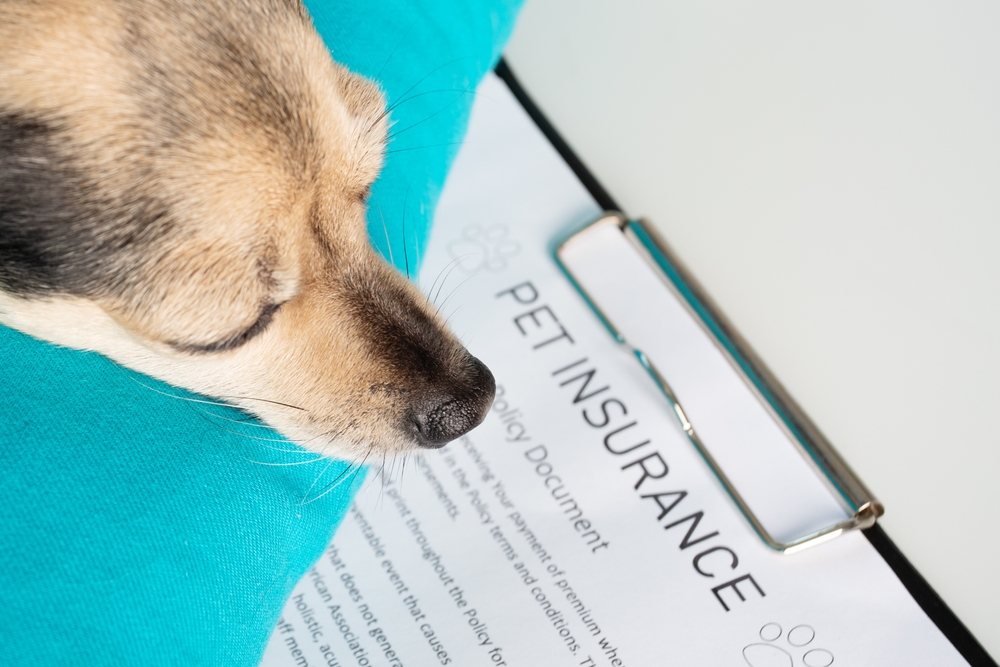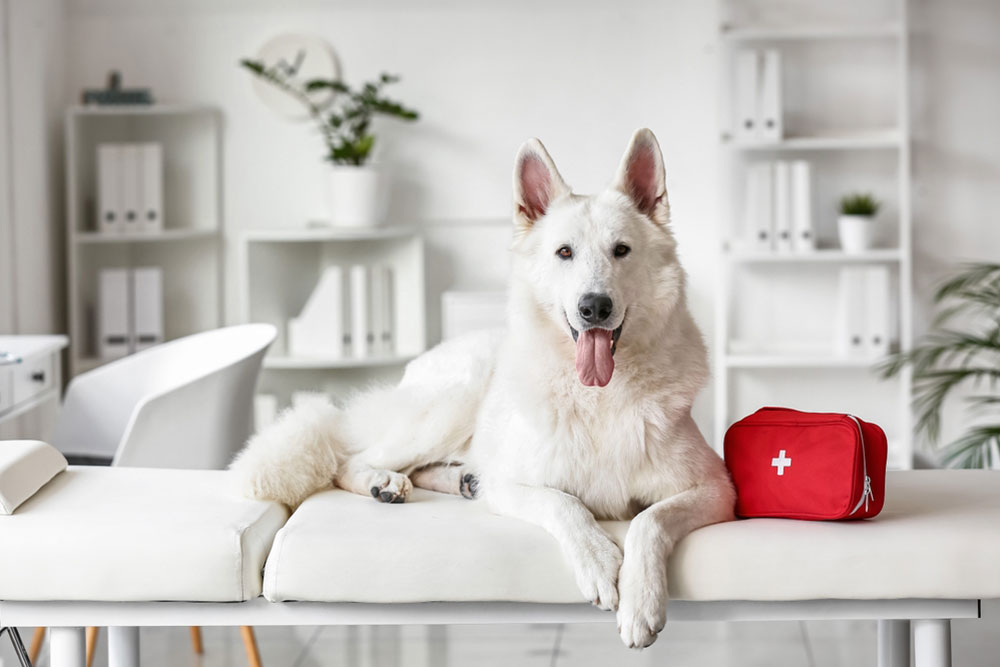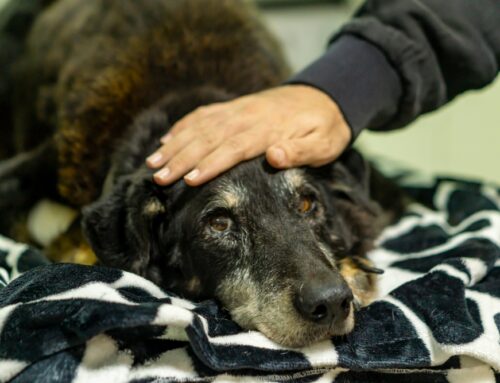Pet Emergency Preparedness: How to Protect Your Dog or Cat Before Crisis Strikes
Your dog slips through the front door as a car screeches to a stop. Your cat misjudges the banister, flips, and hits the landing below. Your senior dog with a heart condition staggers, collapses, and looks at you with glassy eyes. Real emergencies happen every day, and they do not give you time to think. They ask you to act.
At Bayview Animal Hospital, we know how overwhelming those moments can be. Our team is here to provide calm, capable care when you need it most, and to help you prepare ahead of time so emergencies feel a little less frightening.
This guide helps you prepare before anything happens, recognize the moments that require immediate care, and move with a plan instead of panic.
Prevent Problems Before They Start
Many crises are avoidable with small, steady habits. A quick walk-through of your home can catch loose cords, unsafe toys, open trash bins, medication bottles, or toxic plants before they turn into emergencies.
Not every emergency stems from an accident. Medical conditions can sneak up on pets and become urgent if not treated early. Performing your own routine physical exams between veterinary visits helps you spot new lumps, changes in gum color, limps, or breathing issues before they become crises.
Why Wellness Exams Are Essential for Emergency Prevention
Annual wellness exams, and more frequent visits for senior pets, are one of the best ways to prevent emergencies. Veterinarians check pets from nose to tail, listening to the heart and lungs, examining the eyes and mouth, palpating the abdomen, and screening for early signs of illness.
Catching changes early means problems like heart disease, kidney disease, diabetes, or dental infections can be managed before they become life-threatening. At Bayview Animal Hospital, exams may include in-house bloodwork, urinalysis, fecal testing, and digital imaging to detect issues while they are still manageable. For aging pets, these exams are especially critical since their risk of sudden collapse, seizures, or systemic illness increases with age.
Your Go-Bag and First Aid Kit: One Grab-and-Go System
Preparation is easier when the essentials live in one place. Pack a tote or backpack you can grab in the dark and update it twice a year. In coastal Florida, hurricanes add another layer of urgency. Build a realistic emergency checklist, map out evacuation routes, and identify pet-friendly shelters before storm season begins.
Medical and ID Essentials
- Have your pet’s microchip scanned regularly to ensure it is still in place and working. Keep registration information current.
- Printed and digital medical records, recent photos, and microchip numbers.
- A medication list with doses, plus a week’s supply of prescriptions and monthly preventives.
First Aid Basics
Taking a pet first aid class builds confidence. Learn CPR and the Heimlich maneuver before you need them.
Pack:
- Nonstick pads, gauze rolls, cohesive wrap, antiseptic wipes, saline, tweezers, digital thermometer
- Scissors, gloves, instant cold pack, clean towels, and lubricant for thermometers
- A cone and a soft muzzle sized for your pet
Transport and Comfort Supplies
Stress makes pets harder to handle. Prepare items that keep them safe on the move:
- Slip leads, a secure harness, and sturdy carriers for cats
- A spare collar with ID tags
- Bottled water, collapsible bowls, several days of food in airtight bags, waste bags, litter, and a small tray
Remember: first aid buys you time. It does not replace veterinary care.
Triage: Know the “Go Now” Red Flags
Certain signs demand immediate evaluation. Go straight to a veterinarian if you see:
- Short or labored breathing, blue or pale gums
- Collapse, seizures, or loss of consciousness
- Uncontrolled bleeding or severe pain
- A rapidly enlarging belly
- A suddenly cloudy or closed eye
Changes in posture or behavior also matter. Trembling, lethargy, hiding, limping, or refusing to eat or drink can all point to urgent problems.
Common Pet Emergencies
Knowing the more common predicaments pets get into can help you identify the times when you need to move fast. Here are some of the most common emergencies we see:
Choking and Respiratory Distress
Squeakers, bones, chews that are too small, and poorly sized balls are common choking hazards. Illnesses such as heart disease or asthma can also trigger respiratory distress. Both require immediate help.
Electrocution and Electrical Burns
Some pets chew on electric cords. Unplug the source before touching your pet. Burns to the mouth or fluid in the lungs may appear hours later, so even if your pet seems stable, they still need a vet.
Poisoning
Chocolate, xylitol, medications, rodenticides, and certain plants are common toxins. Call Pet Poison Control for immediate guidance. Do not induce vomiting unless a professional directs you to.
Foreign Bodies and GI Obstructions
Repeated vomiting, drooling, abdominal pain, or refusal to eat may indicate a blockage that requires imaging or surgery.
Wounds and Traumatic Injuries
- Deep, gaping, or contaminated cuts need veterinary attention
- Bite wounds often hide deep tearing and bacteria
- Severe limping may point to a fracture requiring pain control and X-rays
- Burns from heat, chemicals, or electricity can worsen rapidly, even if they look mild at first
- Blunt force trauma can cause internal bleeding in the chest or abdomen. Signs may be delayed for hours, but these injuries can be life-threatening
Eye Emergencies
A squinting, red, or cloudy eye is urgent. Ocular emergencies progress quickly and can cause permanent damage without prompt care.
Transport Safely Without Making Things Worse
Even the gentlest pet may bite when injured. Use a soft muzzle for protection. Prevent licking with a cone, and keep the ride calm, quiet, and cool. Stabilize limbs with a towel, lift larger pets on a blanket, and avoid twisting the spine.
Financial Readiness
Money should never delay lifesaving care. Emergencies are unpredictable, and the last thing any family wants is to hesitate because of cost when every minute matters. Having a plan in place before an emergency makes decisions clearer and less stressful.
An emergency savings account dedicated to pet care can cover unexpected visits, overnight hospitalization, or surgery. Even setting aside a small amount each month can make a big difference over time. Pet insurance is another important tool, helping offset the cost of diagnostics, surgery, and ongoing treatment. Policies vary, so it is best to review options before your pet needs urgent care.

Be Prepared, Stay Calm, Act Quickly
Preparation gives you three advantages: you can recognize danger sooner, you have supplies ready, and you already know the first steps while heading for care. Annual wellness exams at Bayview Animal Hospital give you another layer of protection, catching health issues before they become emergencies.
If you have an emergency, call us directly at 727-477-1442. Our team is here to help. Build a go-bag, learn basic first aid skills, and review red flags with your family so everyone understands their role. Emergencies will always be stressful, but with a plan, they are manageable.







Leave A Comment